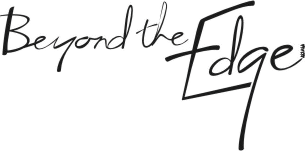Evaluating Facilitation
I was listening to comedian Rod Quantock on the radio today talking about reviews. He said he never reads reviews because if he reads the good ones, then he’d have to read the bad ones too – and they can hurt.
Got me thinking about a couple of things: the similarity between reviews and evaluation, and the fine line between criticism and learning.
Of course there are differences between reviews and evaluations. Reviews are often done by one person, read by many; evaluations may be done by many, read by few. The effect is similar – encouraging others to attend a favourably-reviewed performance; encouraging others to employ (or re-employ) someone who receives favourable evaluations. Or continue with a project. The problem with many evaluations is that they are not used at all. Done to satisfy some policy, and then forgotten. Pity really, because good evaluations can really help with learning and improvement.
That’s the main reason why I tend to evaluate ‘on the run’ – using some processes to assess how things are going so as I can modify in the moment. It’s a bit late to discover things were going pear shaped after the event. Oh, and if you’re not aware that things are going pear-shaped, you’re probably in trouble anyway.
Even when someone insists on a written survey for evaluations, I still use my own participatory processes at the end of a workshop because it gives me invaluable information, helps share the learning amongst the participants, reinforces what we’ve done (and learnt), is fun, and a god way to bring an event to a close.
Here’s my current favorite approaches – I usually use all of these and encourage people to self-select which one they want to do so as they can evaluate in a way that suits them. Each approach is posted on the wall on flip chart so they are quite visible. I also get the small groups to report back in the order below. It always ends with a real buzz amongst the group.
1. ORID Report
Facts and figures – Reactions – Significance – Difference it’s made
2. Three Bears
Hmmm…just right!
Woah! Way too much!
Please, can we have some more?
3. Our Story Spine Story (hat tip to Kat Koppett)
Once upon a time…
Everyday…
But one day...(we came to this workshop/training etc)
Because of that...(x n)
Until finally…
And ever since then…
And the moral of the story is…
PS: It’s really important to do the moral of the story – this usually captures the essence of the workshop in a single statement and invariably gets a satisfied cheer.
On a blank sheet of flip chart, Visual Explorer cards are used to tell the story of the event.

Hi Viv – I’m intrigued by these approaches. Could you say a bit more about how the first and second approaches actually work?
Many thanks!
Stuart
Hi Stuart
In the first approach people write down on a flip chart a few facts and figures about the event eg two day, 15 people etc. Then they write down some reactions eg surprised, tired, fun etc. For the Significance heaing they’d add something about why the event was important eg we learnt, discovered, planned etc. And finally What Difference it Made – we will try our new skills back at work etc. These questions are answered in a small group at the same time that others are working in the other groups.
The Three Bears is a good approach when people are reluctant to say anything critical. BTW, it’s called Three Bears because it’s a take on the Three Bears porridge – too hot, too cold and just right. So, for Just Right they’d say what was ‘just right’ in the workshop. In ‘Too Much’ they could say we spent too much tie on a particular topic or activity for example, and for ‘More’ they would sy what they’d like more of.
I find the combination of all of these gives me a lot of valuable information.
Cheers Viv